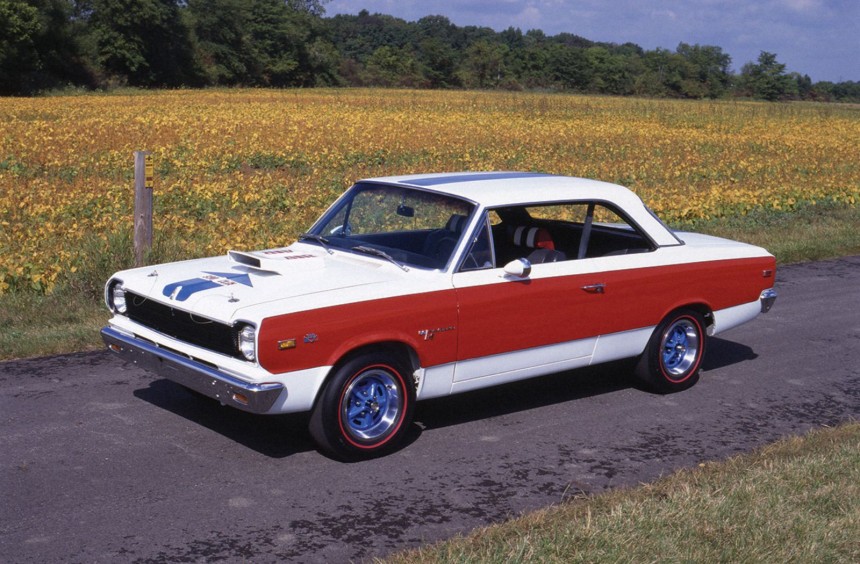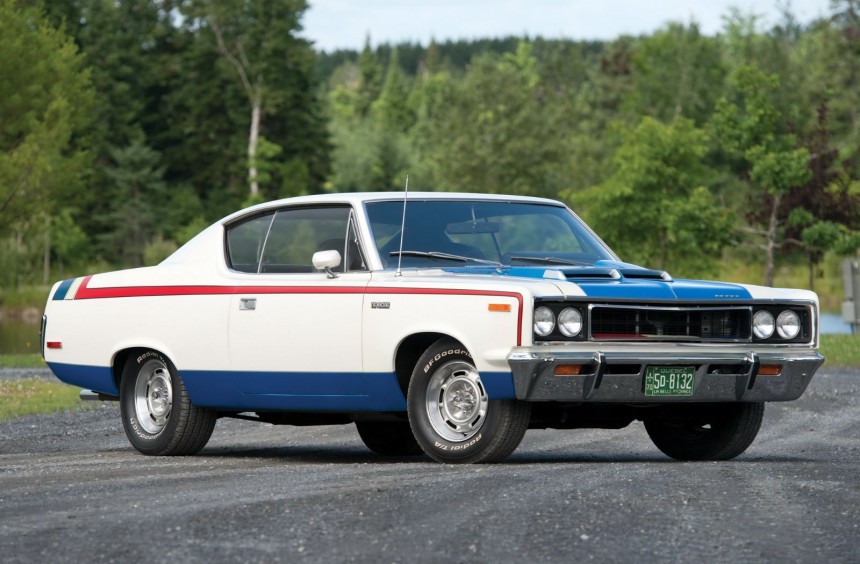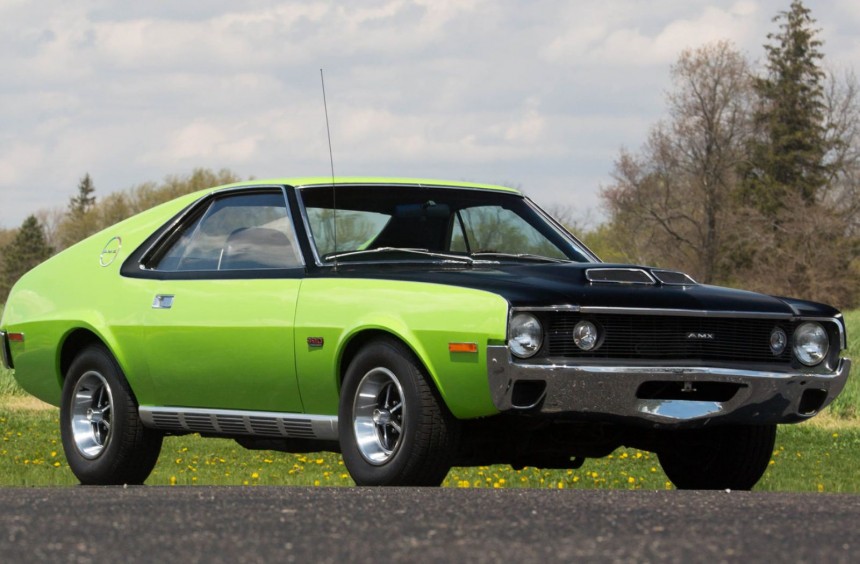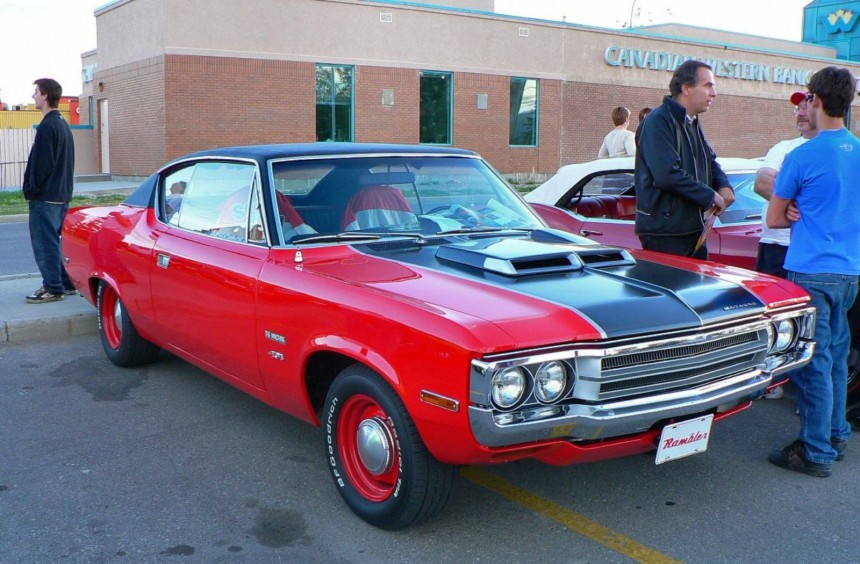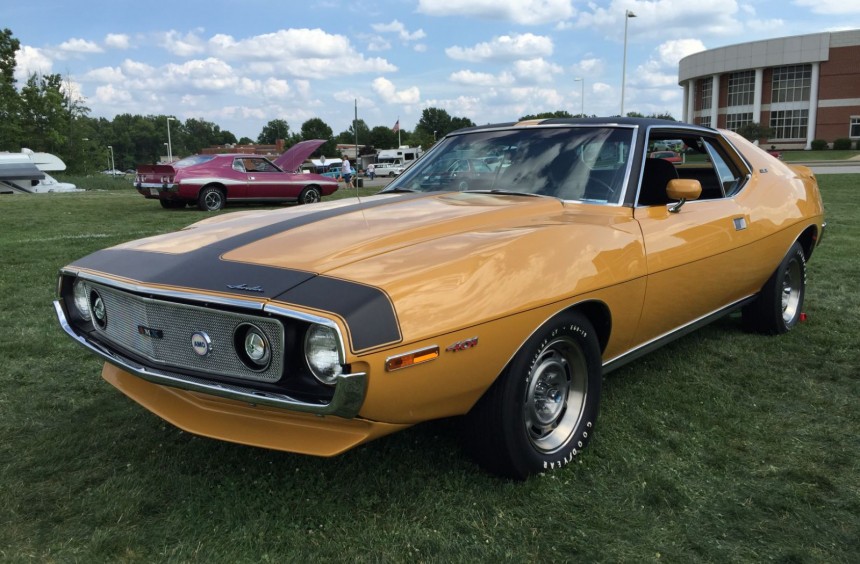Pontiac, the brand credited with starting the phenomenon, closed its doors in 2010, six years after its GM sibling Oldsmobile, and while Buick is still around, it focuses on boring SUVs or sedans tailored for the Chinese market. Apart from the GM divisions, Chrysler (currently part of Stellantis) said goodbye to Plymouth in 2001, whereas Ford did the same with Mercury a decade later.
Of course, there was also the American Motors Corporation, which stopped being an independent carmaker in 1988. But, unlike the brands mentioned above, the Kenosha, Wisconsin-based manufacturer was smaller in terms of both infrastructure and resources. Still, it defied all odds and left its mark on the original muscle car era with some epic models that never got the respect they deserved.
1969 AMC Hurst SC/Rambler
AMC was born in the spring of 1954 from the merger of Nash-Kelvinator Corporation and Hudson Motor Car Company. The compact Rambler was one of its first models inherited from Nash. The first two generations received minor improvements over the original Rambler, but in 1964, the model finally got a complete redesign.
Though it was slightly larger and more spacious, the Rambler remained a budget-friendly compact with nothing to do with performance. However, AMC executives were paying close attention to the growing demand for large, powerful V8s fitted into the engine bays of affordable cars. Five years after the third generation’s debut, the company rolled out the most insane Rambler of them all.
Developed in collaboration with Hurst Performance, the rabid little car, which became known as the Scrambler, was basically a street-legal homologation special conceived for the National Hot Rod Association (NHRA) F/Stock class. It was dubbed SC, which stood for Super Car, a name it lived up to courtesy of a powerful V8 and a long list of upgrades.
The engine in question was a 390-ci (6.4-liter) mated to a four-speed, close-gear manual ornated with a T-shaped Hurst shifter. The massive V8 could crank out 315 hp (320 ps) and 425 lb-ft (576 Nm) of torque, which was sent to the rear wheels through a 3.54:1 “Twin-Grip” limited slip differential. Moreover, the SC was equipped from the factory with front disc brakes, a heavy-duty rear suspension, a performance clutch, chassis reinforcements, and a vacuum-actuated hood scoop.
AMC initially planned to build 500 units, but the demand was way higher than the company had ever expected, so in the end, 1,512 cars left the Kenosha plant that year. Capable of 14-second quarter-mile runs in stock form, the AMC Hurst SC/Rambler was (and still is) one of the most underrated muscle cars of all time and one of the only (barely) street-legal production modes developed for a specific drag racing class.
1970 AMC Rebel Machine
Following the massive success of the SC/Rambler, AMC decided to apply the same muscle car formula for the epic 1970 model year, but this time, the midsized Rebel platform received the honor.
Like the Rambler, the original Rambler Rebel traces its roots back to the 1950s, but unlike its cheap, compact sibling, it was America’s first performance-oriented intermediate. The model spanned over three generations, the last of which came out in 1960, but the Rebel nameplate was revived for the 1967 model year and attributed to a new line of economy mid-size cars.
On October 25, 1969, at the NHRA’s World Championship Drag Race Finals in Dallas, Texas, AMC surprised everyone with the craziest street-legal Rebel ever built, dubbed The Machine.
Like its spiritual predecessor, the Machine was developed with the help of Hurst Performance, but the collaboration wasn’t publicized once production kicked off. It was also powered by the 390 ci (6.4 liters) V8 initially introduced in the AMX range and carried over to the Scrambler. However, it received redesigned cylinder heads, a high-flow dual-plane intake, and larger exhaust manifolds. Thus, output increased to 340 hp (345 ps) and 430 lb-ft (583 Nm) of torque, making it the most potent engine AMC ever fitted into a road-legal production model.
Available with either a four-speed manual or an optional three-speed auto, the Machine was beefed up with power front disc brakes, a heavy-duty suspension system featuring rear springs from the Rebel station wagon, anti-roll bars on both axles, and a 3.54:1 ratio Twin-Grip diff.
Though it wasn’t as powerful as HEMI-powered Mopar intermediates or Chevy’s Chevelle SS 454, the Machine was cheaper and could still run the quarter mile in the mid-fourteens. AMC acknowledged that in a highly-publicized marketing campaign with the slogan: “Not as fast as a 427 ci (7.0 L) Chevrolet Corvette or a Chrysler Hemi engine, but it will beat a Volkswagen, a slow freight train, or your old man’s Cadillac.”
1970 AMC AMX 390
The 1970 model year, which gave us some of the most awesome muscle cars of all time, was also the last year that AMC sold the AMX. Introduced in 1968 and based on the Javelin, this model was conceived to give American buyers a cheaper alternative to the Corvette.
A mix between sports and muscle, the two-seater introduced many industry firsts, such as the injection-molded, one-piece dashboard, fiberglass safety padding inside the A-pillars, or compact large-displacement V8s. Moreover, it was dubbed “the best-engineered car of the year” by the American Society of Automotive Engineers on two consecutive occasions (1969 and 1970).
Undoubtedly the best iteration of the AMX was the 390, which, as the name implies, was powered by the innovatively-compact 390-ci (6.4-liter) V8 that made both the Scrambler and Machine possible.
Equipped with new cylinder heads that featured larger combustion chambers, the new engine was rated at 325 hp (330 ps), making the 1970 AMX 390 the most powerful version in model history. As standard, it came with a four-speed manual complete with a Hurst shifter, and when ordered with the optional Go-Package, it received powered front disc brakes, sway bars, a heavy-duty cooling system, and a functional hood scoop.
AMC built 4,116 examples of the AMX in 1970, but since the 390 was an engine option rather than an individual trim, we don’t know precisely how many were produced. Today, surviving examples in great shape are extremely rare, and their market value is at an all-time high. That being said, they’re still much cheaper than a Corvette from the same era, going for around $40,000.
1971 AMC Matador Go-Machine 401
While 1970 was arguably the best model year of the original muscle car era, things were starting to change just a year later due to a combination of new government regulations and higher insurance rates.
Like other American manufacturers, AMC had to tighten its belt when it came to its performance offerings and discontinued the Rebel Machine along with the entire Rebel lineup. Still, the cool-sounding nameplate didn’t disappear, but morphed into an optional package called Go-Machine, which could be had on the Rebel’s brand-new successor, the Matador.
The package included many of the original Machine’s performance goodies, including power front disc brakes, heavy-duty suspension, Goodyear raised-white-letter tires, a cowl induction hood, a four-barrel carb, and dual exhaust. It could be had with either the 360-ci (5.9-liter) V8 or the new 401-ci (6.6-liter) rated at 330 hp (335 ps) – which was only 15 ponies less than what the high-performance Rebel could make a year earlier. On the other hand, a Twin-Grip differential was not included in the package, but it could be chosen as a separate option.
As with its predecessor, the Matador Go-Machine 401 was no HEMI-killer. However, it was sensibly cheaper and thrilling to drive. It was also a factory sleeper since it had no special paint schemes, decals, or even badges that could differentiate it from the standard Matador coupe. The cowl hood could give it away, but this option was not exclusive to the Go-Machine package.
AMC didn’t sell that many Matador Go-Machines, and few of them survived to this day. Therefore, the model is one of the rarest classic muscle cars out there. Also, because it lacked distinctive badges or at least a unique VIN denomination, it’s tough to authenticate one without the original paperwork.
1971 AMC Javelin AMX 401
In 1968, AMC finally added a pony car to its lineup. As with most of the carmaker’s models, the Javelin was advertised as a cheaper alternative to the Mustang, Camaro, or ‘Cuda. Though high-powered options were available from mid-1968, performance would only reach its peak in 1971.
That year, the second-generation Javelin, introduced in 1970, received another comprehensive restyling. With the AMX two-seater being discontinued, the nameplate was applied to the premium high-performance version of the Javelin.
When powered by the 330-hp (335 ps), 401-ci (6.6-liter) V8 shared with the likes of the Matador Go-Machine mentioned above, it was a solid straight-line performer that could run the quarter mile in the mid-fourteens.
Unique to the AMX were front and rear spoilers, a stainless steel grille mesh, and a fiberglass cowl induction hood. The model could also be equipped with the Go Package, which added the same performance upgrades found on the Rambler and Matador Machines, plus a T-shaped hood decal and a blacked-out rear panel.
Though it’s currently far less popular than its pony car rivals, the Javelin AMX 401 was one of the most impressive muscle cars of its day on both the street and the track. It was the only pony car to be used as a highway police cruiser, and, in race guise, it won the Trans-Am title in 1971.
